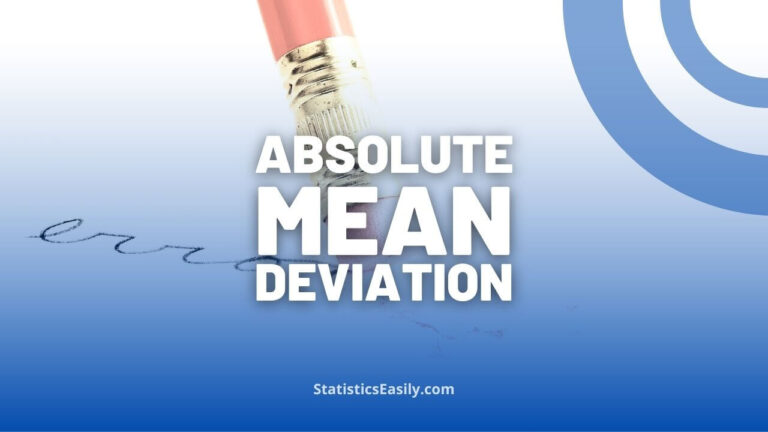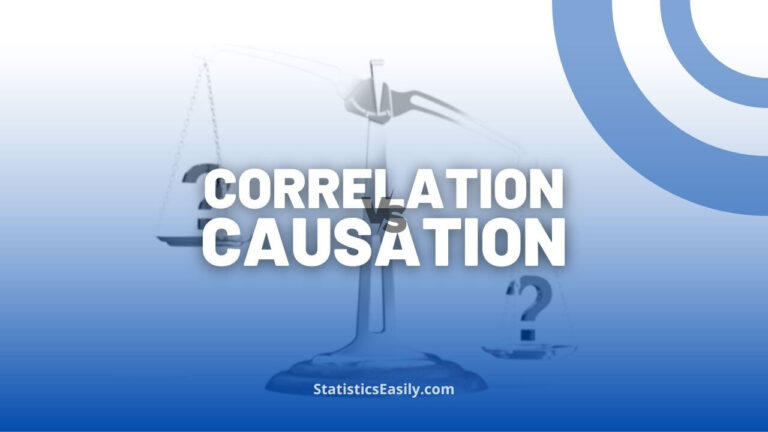What is Goodness-of-Fit? A Comprehensive Guide
Goodness-of-fit evaluates the accuracy of a statistical model by assessing its ability to represent observed data. By conducting goodness-of-fit tests, practitioners can determine whether a model’s assumptions hold true, enabling them to refine and improve the model for more accurate predictions and inferences.
What is Goodness-of-Fit?
Goodness-of-fit is a crucial concept in evaluating the performance of statistical models — it indicates the degree to which a statistical model aligns with a collection of observations.
Typically, goodness-of-fit encapsulates the differences between observed values and those expected under the model.
These measures can be applied in statistical hypothesis testing, for instance, to assess the normality of residuals, to determine if two samples originate from the same distributions, or to verify if the frequency of outcomes adheres to a specific distribution.
Highlights
- Goodness-of-fit evaluates a statistical model’s accuracy by assessing its ability to represent observed data.
- The chi-square test compares observed and expected frequencies for categorical data models.
- The Shapiro-Wilk test assesses normality by comparing a sample’s distribution with a normal one.
- Test statistics and p-value are crucial for interpreting goodness-of-fit test results.
- Rejecting the null hypothesis (H0) in favor of the alternative (H1) suggests the model does not adequately represent the data.
Ad Title
Ad description. Lorem ipsum dolor sit amet, consectetur adipiscing elit.
Types of Goodness-of-Fit Tests
Several goodness-of-fit tests exist, including the Chi-square test, the Kolmogorov-Smirnov test, the Anderson-Darling test, and the Shapiro-Wilk test. Each test serves different purposes and is designed to assess various types of models and data. Therefore, carefully selecting the appropriate test for a specific scenario is essential.
Chi-Square Test: This test compares observed and expected frequencies for categorical data models and assesses the independence or association between two categorical variables. Significant Chi-square statistics indicate that the null hypothesis of independence should be rejected.
Kolmogorov-Smirnov Test: This non-parametric test compares continuous or discrete data’s cumulative distribution functions (CDFs), either between a sample and a reference distribution or between two samples. It is more appropriate for larger sample sizes rather than smaller ones.
Lilliefors Test: This test is an adaptation of the Kolmogorov-Smirnov test for small samples with unknown population parameters, specifically for testing normality and exponentiality.
Anderson-Darling Test: This test compares a sample’s CDF with a reference CDF and is especially sensitive to deviations in tails. It is suitable for data with extreme values or heavy-tailed distributions.
Cramér-von Mises Test: This test compares observed and theoretical CDFs and is less sensitive to tail deviations than the Anderson-Darling test.
Shapiro-Wilk Test: This test assesses normality by comparing a sample’s distribution with a normal distribution and is particularly effective for small sample sizes.
Pearson’s Chi-Square Test for Count Data: This test compares observed and expected count data frequencies based on specified probability distributions, such as Poisson or negative binomial distributions. It is primarily used for testing the goodness-of-fit of a given distribution.
Jarque-Bera Test: This test examines the skewness and kurtosis of a dataset to determine deviation from a normal distribution, testing normality.
Hosmer-Lemeshow Test: This test is used in logistic regression to compare observed and expected event frequencies by dividing data into groups and assessing the model’s goodness-of-fit.
Applications of Goodness-of-Fit Tests
Goodness-of-fit tests have diverse applications across various industries and research fields. Some examples include:
Healthcare: Assessing the appropriateness of models predicting disease prevalence, patient survival rates, or treatment effectiveness. Example: Using the Hosmer-Lemeshow test to evaluate the performance of a logistic regression model predicting the likelihood of diabetes based on patient characteristics.
Finance: Evaluating the accuracy of models forecasting stock prices, portfolio risk, or consumer credit risk. Example: Applying the Anderson-Darling test to verify if the distribution of stock returns follows a specific theoretical distribution, such as the normal or Student’s t-distribution.
Marketing: Examining the fit of models predicting consumer behavior, such as purchase decisions, customer churn, or response to marketing campaigns. Example: Utilizing the Chi-square goodness-of-fit test to determine if a model accurately predicts the distribution of customers across different market segments.
Environmental Studies: Assessing models predicting environmental phenomena like pollution levels, climate patterns, or species distribution. Example: Employing the Kolmogorov-Smirnov test to compare observed and predicted rainfall patterns based on a climate model.
Interpreting Goodness-of-Fit Test Results
Interpreting the results of goodness-of-fit tests is a crucial step in the analysis process. Here, we outline the general approach to interpreting test results and provide insights into decision-making based on the outcomes.
Test statistic and p-value: Goodness-of-fit tests typically provide a test statistic and a p-value. The test statistic measures the discrepancy between the observed data and the model or distribution under consideration. The p-value helps assess the significance of this discrepancy. For example, a lower p-value (usually below a predetermined threshold, such as 0.05) suggests that the observed differences are unlikely due to chance alone, indicating a poor model fit.
Null and alternative hypotheses: Goodness-of-fit tests are based on null and alternative hypotheses. The null hypothesis (H0) typically states no significant difference between the expected values and the observed data based on the model. The alternative hypothesis (H1) contends that there is a significant difference. If the p-value is below the chosen threshold, we reject the null hypothesis (H0) in favor of the alternative hypothesis (H1), suggesting that the model does not adequately represent the data.
Ad Title
Ad description. Lorem ipsum dolor sit amet, consectetur adipiscing elit.
Conclusion and Best Practices
Goodness-of-fit is critical to evaluating statistical models’ performance, ensuring accurate predictions and inferences. Various goodness-of-fit tests, such as the Chi-square, Kolmogorov-Smirnov, and Anderson-Darling, cater to different data types and models. By understanding and applying the appropriate test for a specific scenario, practitioners can effectively assess the adequacy of their models and refine them as needed. Interpreting test results, particularly the test statistic and p-value, is crucial for making informed decisions about a model’s suitability. Ultimately, applying and interpreting goodness-of-fit tests contribute to more accurate and reliable models, benefiting research and decision-making across diverse fields and industries.
Recommended Articles
Interested in learning more about data analysis, statistics, and data science? Take advantage of our other insightful articles on these topics! Explore our blog now and elevate your understanding of data-driven decision-making.
- Which Normality Test Should You Use?
- Unlocking Goodness-of-Fit Secrets (Story)
- Understanding the Assumptions for Chi-Square Test of Independence
- How to Report Chi-Square Test Results in APA Style: A Step-By-Step Guide
- What is the Difference Between the T-Test vs. Chi-Square Test?
- A Guide to Hypotheses Tests (Story)
Frequently Asked Questions (FAQs)
Goodness-of-fit evaluates the accuracy of a statistical model by assessing its ability to represent observed data.
The Chi-square test compares observed and expected frequencies for categorical data models.
The Kolmogorov-Smirnov test is a non-parametric method assessing cumulative distribution functions, suitable for small sample sizes.
The Anderson-Darling test is sensitive to tail deviations. It is helpful for data with extreme values or heavy-tailed distributions.
The Shapiro-Wilk test assesses normality by comparing a sample’s and normal distributions.
The Hosmer-Lemeshow test is used in logistic regression to assess model goodness-of-fit.
Goodness-of-fit tests have applications in healthcare, finance, marketing, and environmental studies.
Test statistics and p-value are crucial for interpreting goodness-of-fit test results and determining the model’s adequacy.
Rejecting the null hypothesis (H0) in favor of the alternative (H1) suggests the model does not adequately represent the data.
Proper application and interpretation of goodness-of-fit tests lead to more accurate and reliable models, benefiting research and decision-making.








